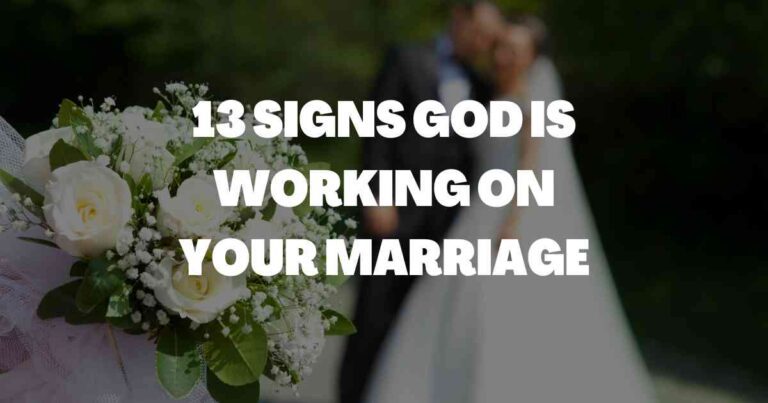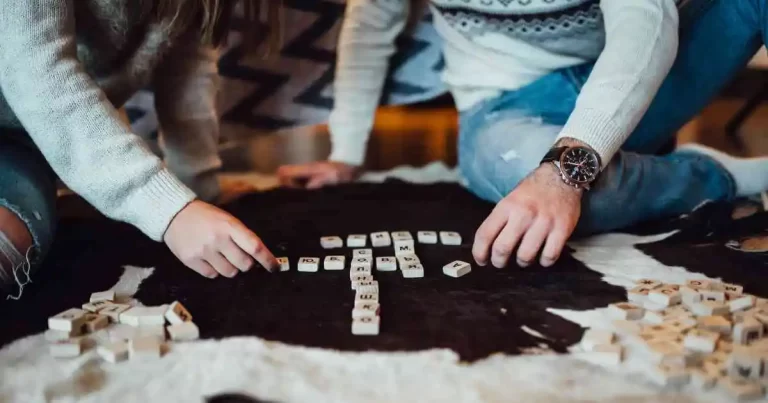How to Communicate Effectively with Your Partner
Effective communication is the cornerstone of any healthy relationship. It’s the vessel through which we express love, resolve conflicts, and create intimacy. Especially in the complex and crucial context of a romantic partnership, knowing how to communicate can mean the difference between a thriving bond and a strained connection.
This comprehensive guide explores the intricate art of communication within relationships, delving into listening, expression, conflict resolution, and trust-building. Whether you’re a couple looking to enhance your connection or an individual seeking to improve how you interact with your partner, these insights will help establish clear and meaningful dialogue.

Contents
- 1 Understanding Communication Styles
- 2 Active Listening: The Bedrock of Connection
- 3 Non-Verbal Communication: The Unsaid Language
- 4 Expressing Emotions: The Journey of Vulnerability
- 5 Conflict Resolution: Navigating Rough Waters
- 6 Building Trust: The Solid Ground for Conversation
- 7 Conclusion: The Continuous Conversation
- 8 FAQ: How to Communicate Effectively with Your Partner
- 8.1 Q1: Why is effective communication important in a romantic relationship?
- 8.2 Q2: What are the different communication styles mentioned in the guide?
- 8.3 Q3: How can I identify my partner’s communication style?
- 8.4 Q4: Is it possible to adjust one’s communication style?
- 8.5 Q5: What is active listening, and why is it important?
- 8.6 Q6: What are some techniques for active listening?
- 8.7 Q7: How can I avoid distractions during important conversations with my partner?
- 8.8 Q8: Why is non-verbal communication important in relationships?
- 8.9 Q9: How can I encourage my partner to express their emotions openly?
- 8.10 Q10: How should I handle anger or frustration in a constructive way during a conversation with my partner?
- 8.11 Q11: What are some strategies for resolving conflicts peacefully?
- 8.12 Q12: When should I consider seeking professional help for communication issues in my relationship?
- 8.13 Q13: How important is trust in effective communication within a relationship?
- 8.14 Q14: Can trust be rebuilt if it’s been broken in a relationship?
- 8.15 Q15: What is the key takeaway from this guide on effective communication with a partner?
Understanding Communication Styles
The way we communicate is deeply rooted in our personalities and past experiences. Each person has a unique style of conveying thoughts and feelings, and recognizing these differences is the first step towards effective communication.
Different Communication Styles
There are four main communication styles:
- Passive: This style involves avoiding confrontation and simply “going along” with what others want.
- Aggressive: The aggressive communicator is often combative and may disregard the feelings of others.
- Passive-Aggressive: Individuals with this style may appear passive on the surface but exhibit indirect hostility.
- Assertive: Assertive communicators are respectful of both their own and other’s rights and express their feelings openly and honestly.
Understanding which style you and your partner adopt under different circumstances is crucial for more harmonious interactions.
Identifying Your Partner’s Communication Style
Key signs of each communication style can be found in how your partner speaks, body language, and emotional reactions during disagreements. Look for recurring patterns in their behaviour to determine their dominant style.
Adjusting Your Communication Style
Flexibility in your communication style can lead to better understanding and problem-solving. If you’re aggressive, learning to be more passive can help de-escalate conflicts; for passive communicators, gradually becoming more assertive can ensure your needs are met. Strive for a balance where you can confidently address concerns without disregarding your partner’s feelings.
Active Listening: The Bedrock of Connection
Active listening is a skill that involves fully concentrating, understanding, responding, and remembering what is being said. It’s the foundation of empathy and a tool to bring couples closer.
The Importance of Active Listening
Active listening conveys respect and a genuine interest in what your partner has to say. It validates their experiences and emotions, creating a safe space where they feel heard.
Techniques for Active Listening
To become a better active listener:
- Maintain eye contact: This shows your partner they have your undivided attention.
- Reflecting: Repeat what you’ve heard in your own words to confirm understanding.
- Paraphrasing: Use your words to summarize your partner’s points during the conversation.
These techniques not only improve communication but can also prevent misunderstandings and conflicts.
Avoiding Distractions During Conversations
In our technology-driven world, distractions like smartphones and television can hinder active listening. Create a distraction-free zone for important conversations to ensure you and your partner can focus on the discussion.
Non-Verbal Communication: The Unsaid Language
Non-verbal cues can be just as important as spoken words. Our body language, facial expressions, and even the physical distance between us can give a different layer of meaning to our communication.
The Importance of Non-Verbal Cues
Reading your partner’s non-verbal cues can provide additional context to their words, helping you understand their true feelings and intentions.
Body Language and Facial Expressions
Positive body language, such as leaning in towards your partner and smiling, can reinforce a message of openness and warmth. Conversely, crossed arms or a furrowed brow can signal defensiveness or frustration.
Using Touch and Gestures Effectively
Touch, when used appropriately, can communicate love and support. A gentle hand on the shoulder or a caring hug can convey more than words, especially when emotions run high.
Expressing Emotions: The Journey of Vulnerability
Sharing our emotions can be both empowering and challenging. In a relationship, the ability to express how we feel openly and constructively can greatly deepen intimacy.
Encouraging Open Expression of Emotions
Create an environment where you and your partner are comfortable sharing your emotions. This requires acceptance, understanding, and the willingness to be vulnerable.
Validating and Empathizing with Your Partner’s Emotions
When your partner shares an emotion, reflect it in a supportive manner. Phrases like “I can understand why you feel that way” or “It makes sense that you’re upset” show empathy and validation.
Constructive Ways to Express Anger or Frustration
Anger is a natural emotion and should be expressed constructively. Use “I” statements to convey your feelings without blaming your partner, and take a break if needed to collect your thoughts during heated discussions.
Disagreements are inevitable in any relationship, but navigating these conflicts can make all the difference. Learning to resolve issues peacefully can further strengthen your bond.
Strategies for Resolving Conflicts Peacefully
Understanding each other’s perspective is the first step. Be patient, listen actively, and strive to find common ground. Avoid personal attacks and focus on the issue at hand.
Active Problem-Solving and Compromise
Solving a problem together can bring unity. Look for solutions that meet your needs and be willing to compromise. Healthy compromise doesn’t mean sacrificing your values but finding a middle ground where both partners feel their needs are acknowledged.
Seeking Professional Help When Needed
There’s no shame in seeking the help of a relationship counsellor when you’re gridlocked in a communication rut. A professional can provide unbiased guidance and communication tools tailored to your needs.
Building Trust: The Solid Ground for Conversation
Trust is the bedrock upon which all effective communication must stand. Without a sense of security and honesty, communication can often break down.
Trust as the Foundation of Effective Communication
When trust is high, you and your partner can communicate without fear of judgment or betrayal. Trust allows for open, honest dialogue, free from worry about the consequences of being vulnerable with one another.
Honesty, Transparency, and Consistency
Be honest with your partner, even when it’s difficult. Transparency and the consistency of your actions and words will further reinforce the trust in your relationship.
Rebuilding Trust After a Breach
If trust has been broken, committing to rebuilding it through clear, respectful communication is essential. Set boundaries, stick to commitments, and be patient as trust is restored over time.
Conclusion: The Continuous Conversation
Healthy communication in relationships is not a destination; it’s a continuous journey of growth and learning. By understanding the intricacies of communication styles, practising active listening, harnessing non-verbal cues, expressing emotions effectively, navigating conflicts, and building trust, you can cultivate a rich connection and understanding partnership. Remember, the effort you put into enhancing your communication skills with your partner is a direct investment in the strength and longevity of your relationship.
In your quest to master the art of communicating with your partner, patience and persistence will be your allies. Celebrate the small victories, learn from the challenges, and continually strive to create a loving and responsive dialogue with the person you cherish. With these insights and a commitment to open-hearted interaction, you’ll be on your way to cultivating a relationship that thrives on effective communication at its very heart.
FAQ: How to Communicate Effectively with Your Partner
Q1: Why is effective communication important in a romantic relationship?
A1: Effective communication is crucial because it helps build intimacy, resolve conflicts, and express love in a healthy way. It forms the foundation of a strong and thriving romantic partnership.
Q2: What are the different communication styles mentioned in the guide?
A2: The guide discusses four main communication styles: Passive, Aggressive, Passive-Aggressive, and Assertive. Each style has its own characteristics and impact on relationships.
Q3: How can I identify my partner’s communication style?
A3: Pay attention to your partner’s speech, body language, and emotional reactions during disagreements. Recognizing recurring patterns in their behavior can help you determine their dominant communication style.
Q4: Is it possible to adjust one’s communication style?
A4: Yes, the guide suggests that flexibility in your communication style can lead to better understanding and problem-solving. It’s possible to adapt your style to improve communication with your partner.
Q5: What is active listening, and why is it important?
A5: Active listening is the skill of fully concentrating, understanding, and responding to what your partner is saying. It’s important because it shows respect, validation, and creates a safe space for open dialogue.
Q6: What are some techniques for active listening?
A6: The guide suggests maintaining eye contact, reflecting what you’ve heard in your own words, and paraphrasing your partner’s points during the conversation as techniques to enhance active listening.
Q7: How can I avoid distractions during important conversations with my partner?
A7: To avoid distractions, create a distraction-free zone for important discussions. This may involve putting away smartphones and turning off the television to ensure focused communication.
Q8: Why is non-verbal communication important in relationships?
A8: Non-verbal cues, such as body language and facial expressions, provide additional context to spoken words and help you understand your partner’s true feelings and intentions.
Q9: How can I encourage my partner to express their emotions openly?
A9: Creating a safe and accepting environment for your partner is essential. This includes acceptance, understanding, and the willingness to be vulnerable yourself.
Q10: How should I handle anger or frustration in a constructive way during a conversation with my partner?
A10: When expressing anger or frustration, use “I” statements to convey your feelings without blaming your partner. Taking a break if needed to collect your thoughts can also be helpful.
Q11: What are some strategies for resolving conflicts peacefully?
A11: Strategies include understanding each other’s perspective, active problem-solving, and compromise. Focus on the issue at hand, avoid personal attacks, and seek common ground.
Q12: When should I consider seeking professional help for communication issues in my relationship?
A12: If you find yourselves stuck in a communication rut or unable to resolve issues, it’s not uncommon to seek the help of a relationship counselor. They can provide unbiased guidance and tailored communication tools.
Q13: How important is trust in effective communication within a relationship?
A13: Trust is essential because it allows for open, honest dialogue without fear of judgment or betrayal. It provides the foundation for effective communication in a relationship.
Q14: Can trust be rebuilt if it’s been broken in a relationship?
A14: Yes, trust can be rebuilt through clear, respectful communication, setting boundaries, sticking to commitments, and being patient. It takes time and effort to restore trust.
Q15: What is the key takeaway from this guide on effective communication with a partner?
A15: The guide emphasizes that healthy communication in relationships is an ongoing journey of growth and learning. By understanding communication styles, practicing active listening, using non-verbal cues effectively, expressing emotions constructively, resolving conflicts, and building trust, you can cultivate a strong and lasting partnership. Patience and persistence are your allies in this process.
You might also like:
- 10 Tips for a Successful First Date: Setting the Stage for Love
- What to Do if Your Girlfriend Cheats on You, but You Still Love Her
- Should Girlfriend and Boyfriend Talk Every Day? Finding the Right Balance in Communication
- How to Suggest a Location for a Date: A Guide to Making the Right Choice
- When Should the Girl Start Planning Dates? – Taking Charge of Your Dating Life
- Why Coffee Dates Are a Bad Idea: Breaking the Cliché Café Encounter
- How to Save A Relationship: 18 Best Tips From Experts in 2023
- How To Make Him Miss You – The 5 Most Effective Tips
- 69 Romantic Date Night Ideas in Chicago
- 20 Things Not to Do When Traveling as a Couple
- 16 Romantic Valentine’s Day Getaway in the USA Ideas
- 35 Amazing Long-Distance Relationship Gifts For Couples
- 10 Adorable Valentine’s Day Date Ideas
- Where to Honeymoon in Europe: 23 Dreamy Honeymoon Destinations
- How To Be a Better Listener in a Relationship & Marriage
- 10 Best Practices for Dating As a Single Parent
- 20 Creative Ideas for Your Next Movie Date Night at Home
- 9 Things That Will Happen When You Meet the Right Person
- Relationship Advice for Couples: 14 Principles For Lasting Relationships
- 8 Ways To Avoid Losing Yourself In A Relationship
- 25 Best Places to Visit in the USA in 2023







